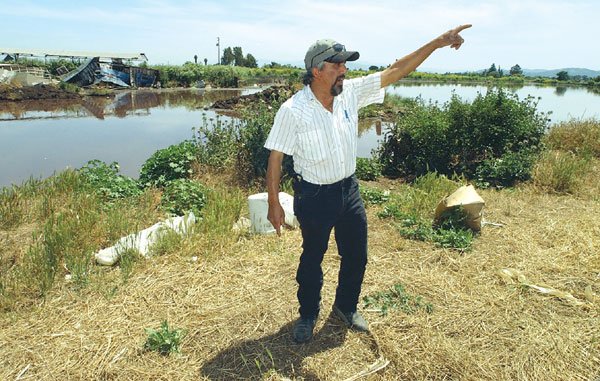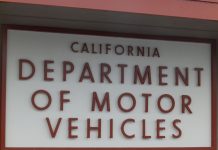There’s a major polluter in the South Valley, but it’s not a
single farm or a big corporation. It’s not the result of a natural
disaster, and most of the people who are responsible don’t even
know they’ve done anything wrong.
There’s a major polluter in the South Valley, but it’s not a single farm or a big corporation. It’s not the result of a natural disaster, and most of the people who are responsible don’t even know they’ve done anything wrong.
This polluter is called non-point source pollution, and it’s something that all of us contribute to. This form of pollution – which comes from car exhaust, lawn treatments, spilled chemicals and cigarette butts in the street – is the combined output of thousands of people living in towns and cities around the world, but finding the solution to this pollution problem is harder than most residents would think. Like other societal issues cities, counties and other government agencies face, this problem results from thousands of sources with no clear villain to go after.
“It’s very easy to think about the point sources – pipelines that dump directly into a waterway,” said Tony Eulo, program administrator for the city of Morgan Hill’s Department of Public Works. “Sewage treatment facilities, manufacturing facilities and things have pipes that hook directly to the Bay or to water sources. They’re very closely regulated, but non-point sources are kind of everything else.”
Non-point source pollution is the spillover of modern, urbanized society, said Steve Homan, coordinator of Santa Clara County’s Clean Water Program. It’s the dirt that runs off construction sites and becomes river sediment.
Or the fertilizers and chemicals that we overuse on our lawns, which cause algae and other bacteria to bloom in lakes and rivers. And it’s the drips of oil that collect in our driveways and parking lots, tiny bits of toxic chemicals, which are then multiplied by thousands of residents and washed directly into streams, rivers and, eventually, the ocean.
In areas like Gilroy, Hollister and Morgan Hill, the effects of this form of pollution are especially visible because stormwater runoff, that is, water that flows down gutters into storm drains, is often tainted by small-scale commercial and residential activity.
And it drains not to a complex structure of disposal channels, tunnels and pipes, but directly to local streams in most cases, said Homan.
“Everybody lives in a watershed in one way or another, so there are a jillion different places for non-point source pollution to enter the ecosystem” said Homan.
That means stormwater runoff and other pollutants from the South Valley find their way into the Pajaro River and, from there, the ecologically diverse Monterey Bay.
Concern over this type of pollution is relatively new, but the threat it poses is imminent. Pollutants threaten the health of major waterways in the nation as well as the health of those waters’ residents – fish, plants, insects and other animals that are vital to a healthy ecosystem. And the danger to those plants and animals, in turn, threatens the health of the human communities they support.
Concern over the health of the nation’s water first became a major issue in 1972, when congress passed the Clean Water Act regulating harmful discharges from factories and other industrial facilities. It would be nearly two decades before stormwater regulation was included in this act.
Today, penalties for non-point source pollution can cost those responsible as much as a $25,000-per-day civil penalty and dictate misdemeanor sentences of up to six months in jail plus a $1,000 fine, said Homan. Counties and cities, which are responsible for investigating water-dumping violations and claims of abuse, are also responsible to enforce the act, even as states and the federal government watch over them, ensuring that cities and counties meet deadlines for community education and action programs.
“We’re required to regulate and inspect industrial and commercial sites like restaurants, and we’re required to investigate any reports of illegal dumping or illicit hook-ups to waterways,” said Homan. “Each place has done that in their own way.”
In northern Santa Clara County, water drains to the San Francisco Bay and is covered by a more stringent set of environmental rules due to the area’s larger population.
There, new developments are required to process their storm water in a manner that eliminates the spread of most toxins, and newer parking lots are being designed with bioswales, said Homan. These natural water filters are full of plants that are capable of slowing down runoff water and absorbing some of it’s more dangerous ingredients like oil, antifreeze and other chemicals, said Eulo.
In Morgan Hill, a city that is currently developing its own programs for dealing with runoff issues, officials plan to launch a massive public awareness campaign, entering schools to talk about pollution in stormwater runoff and calling on residents to help with community-sponsored waterway clean-ups, reminding them of proper disposal guidelines for hazardous waste, and marking stormwater drains with special stencils, said Eulo.
The cities of Gilroy and Hollister are working on similar community action plans, currently under review by the regional water control board.
To learn more about non-point source pollution and what you can do to reduce your role in its formation, visit www.SCCBuilding.org and click on “Clean Water Program.”














